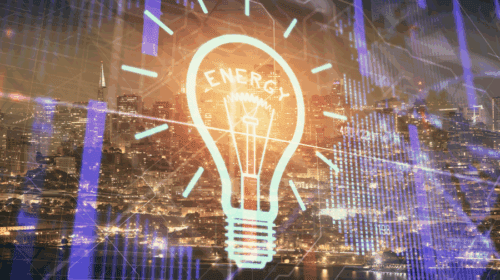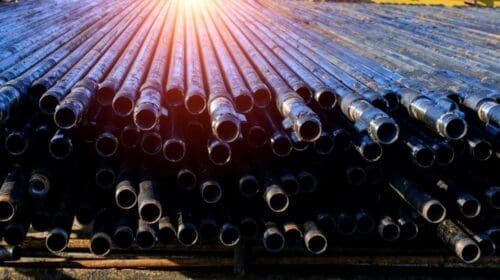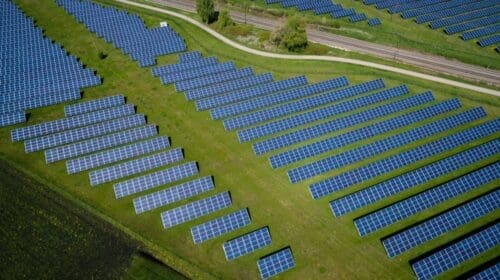Bifacial solar panels produce power from both sides of the module. They feel like a recent innovation, but the concept has existed for decades. A recent resurgence occurred due to falling solar costs, making them more accessible to produce and install.
Stakeholders and climate activists must know about the panels’ impact on urban and technological development for a greener world. What are the benefits of bifacial solar panels, and how do they revolutionize demanding energy and infrastructure projects?
1. Increased Energy Generation
Bifacial photovoltaics (BPV) have risen in prominence because of passivated emitter rear cell (PERC) technology, elevating its efficiency for cost. PERC panels achieve this by having another modified reflective layer to distribute heat and light. Myriad variables factor into a solar panel’s performance, such as:
- Positioning
- Material composition
- Tracking
- Height
- Climate
- Latitude
- Tilt
It is indisputable that adding another surface would make arrays more efficient, but by how much? Tests show an increased power generation of up to 40 percent under the right conditions.
For example, the reflective nature of surrounding surfaces – known as the albedo – should be white paint, concrete or another bright surface to bounce as much light back into the module. Single-axis trackers follow where the most power generation potential lies. Dual-axis trackers would be even more potent, but are not financially viable commercially.
What applications and major initiatives could this boost in power provide for specific industries? Nebraska deployed two solar farms: One was monofacial and the other was BPV. A comparative study determined their power generation. The results could influence every subsequent solar farm project.
The BPV section outperformed financially and electrically, even after weighing capital costs and import tariff exemptions against performance. Its output was 5.5 percent higher, with an average value of $30-$49 per MWh compared to the $23-$46 per MWh of the monofacial farm.
2. Improved Productivity in Diffuse Light Conditions
Cloud cover, skyscrapers and other environmental barriers disrupt solar panel performance. BPV arrays perform better than monofacial variants in low-light or hazy conditions. Conventional solar panels still pull energy during rain, snow and even bright moonlight.
However, BPVs demonstrate more significant performance because they can use scattered light from all directions to generate power. For example, in urban landscapes where the sky is difficult to see, BPVs grab what they can from other reflective sources.
This BPV superpower piloted several projects in a big way. Research in Nordic countries explored vertical BPV panel effectiveness on residential and commercial structures in high latitudes. The geographic area is known for short days and snowy, cloudy weather, so the project illuminated bifacial technology’s promise. The panels increased system capacity by 46 percent despite the climate and limited sun exposure.
3. Enhanced Durability and Longevity
The blueprint of a bifacial panel lends itself to a longer life. The even distribution of tempered glass allows it to be frameless, unencumbered by other materials that stressors compromise. The increased glass makes it more durable to heat and weather. It is naturally UV resistant and better distributes high temperatures to promote longevity.
The U.S. expects to generate 45 percent of its electricity from solar power, and bifacial panels are essential for meeting and surpassing the projection. Emboldened natural disasters like hurricanes and wildfires have plagued the nation for decades, and it needs strong panels to ride the energy transition without failure.
Bifacial durability is believed in strongly enough by experts to bring them into new verticals. A company is launching BPVs for marine and RV applications, exposing the monocrystalline panels to more elements than they would sitting on a rooftop. The business designed them for a specific lifestyle, where shedding snow and getting hit by small rocks should not be a prominent worry for buyers. Exposing panels under harsher, more inconsistent conditions proves their resilience in the wild.
4. Integration with Landscaping and Architectural Designs
BPVs have architectural versatility, giving more power generation to designs previously absent of their potential. Bifacial panels are ideal for parking garages, farms and countless other urban buildings. They are more aesthetically pleasing than conventional panels.
The glass panes provide a generous sparkle, increasing property values by visuals alone.
BPVs better integrate with more landscapes because they are malleable. Land use concerns are rife in renewable energy discourse, dismissing the capabilities of solar power. Bifacial options allow panels to thrive without worrying about taking up real estate better served by housing or industry.
Research explored bifacial panel power generation for building-integrated photovoltaics. Bifacial skylights on single-axis systems improved visual appeal with their unique light-reflecting qualities. The rotating skylights output 29.9 percent more power than stagnant tests, delivering on form and function.
5. Environmental Impact and Sustainability
Renewable energy innovations would only be comprehensive by acknowledging the benefits of bifacial solar panels for the planet. The positive impact of solar power is well-known for decarbonizing the energy sector and minimizing reliance on fossil fuels. Bifacial panels bring even more eco-conscious advantages.
Compared to monofacial panels, how do their life cycle assessment and cost-benefit analysis differentiate? A holistic LCA proved BPVs offsets its input costs in less than two years. Additionally, it paid back its greenhouse gas emissions in 2.3 years. Monofacial panels are capable of similar feats in longer time frames.
The impact this could have on agrivoltaics is enormous. BPV infrastructure supports water and land conservation while promoting healthy farming habits, like regenerative agriculture. How does a solar panel do all of this? In Chanco, Chile, farmers tested vertical BPVs on farmland. Their presence relieved irrigation burdens on prized crops by being a barrier against strong winds drying out fields. The additional shading also improved growth and kept water from evaporating too quickly.
The Benefits of Bifacial Solar Panels Elevate All Projects
Bifacial solar panels used to be the industry’s best-kept secret, but now they are coming to the forefront of renewable energy. The generation potential can transform every sector and building from gigantic data centers to pastoral homesteads.
They are the key to integrating dynamic, reliable green power into urbanization projects and agricultural empires. The bifacial solar panel market appears promising, so how creative will industries become when they get them?
Featured photo courtesy of Unsplash/Biel Morro.
Emily Newton is the Editor-in-Chief of Revolutionized, an online magazine discussing the latest industry innovations and trends.
Oil and gas operations are commonly found in remote locations far from company headquarters. Now, it's possible to monitor pump operations, collate and analyze seismic data, and track employees around the world from almost anywhere. Whether employees are in the office or in the field, the internet and related applications enable a greater multidirectional flow of information – and control – than ever before.









